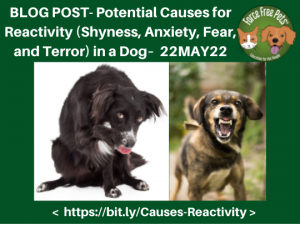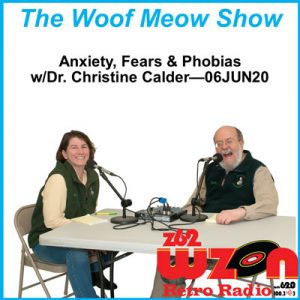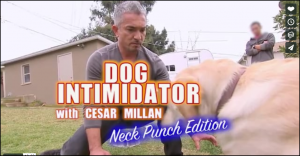< A version of this article was first published in 2018 as a five-part series in the January, February, March, April and May 2018 issues of Downeast Dog News >
< Updated 1FEB20 >
< A short link to this page – http://bit.ly/Brambells-1-5 >
< Click to download or print a PDF file containing all 5 columns in this series >
We have a responsibility to make our dog’s life the best life possible. Your dog’s quality of life is directly under your control.
 In this post I will be discussing Brambell’s Five Freedoms and how you can use them to help your dog have a long, fun-filled life. I will examine the role of nutrition, basic husbandry, veterinary care, training, behavior, and the management of your dog, as they all play a role in the quality of its life.
In this post I will be discussing Brambell’s Five Freedoms and how you can use them to help your dog have a long, fun-filled life. I will examine the role of nutrition, basic husbandry, veterinary care, training, behavior, and the management of your dog, as they all play a role in the quality of its life.
- Brambell’s Five Freedoms originated in the United Kingdom in December of 1965. The Brambell Commission published its report over 50 years ago, yet it is still a very applicable standard for evaluating the holistic health of any animal kept by people, including dogs.
The Five Freedoms are Freedom from Hunger and Thirst, Freedom from Discomfort, Freedom from Pain, Injury or Disease, Freedom to Express Normal Behavior, and Freedom from Fear and Distress.
Fundamental to being able to assess an animal’s welfare is having a thorough knowledge of a species’ husbandry requirements, behavior, and how they communicate and express emotions. I invite you to consider some of the questions that I will pose in these columns and to contemplate how you would address them within Brambell’s Five Freedoms as you care for your dog.
Freedom from Hunger, Thirst, and Malnutrition
At first read, this sounds relatively simple; provide your dog with food and water, and you have met their needs. Unfortunately, that is not the case.
Does the type of food we feed our dog matter? The dog has the digestive system of a carnivore; an animal meant to thrive on meat- animal protein and fat. When you feed your dog kibble or dry dog food, they are consuming food that is predominantly made up of carbohydrates. This highly processed “far from fresh food” is composed of 40% or more carbohydrates. The dog does not need carbohydrates in their diet. That is why you will not find the percent of carbohydrates listed in the Guaranteed Analysis panel on a bag of dog food. Kibble or dry dog food was not created to provide optimum nutrition for our dogs but to provide convenience for us and a long shelf life and higher profits for pet food manufacturers. Dogs can survive on kibble, but my question is: can they thrive on such an unnatural diet?
Can we say, in good conscience, that our dog is free from hunger, thirst, and malnutrition if we are feeding them a sub-optimal diet? Feeding a dog food that will provide them with the best nutrition possible is not inexpensive, at least when compared to grocery store kibble. However, when we start to factor in reduced veterinary bills with an improved diet, we may be further ahead when we feed the best food we can afford.
Is it better to have one pet and to feed her the best diet you can afford, or is it better to have multiple pets for social interaction? It is a question my wife and asked ourselves and is a reason we have downsized from a maximum of five dogs to one dog. We want to do the best we can for Muppy and having a single dog allows for more resources, both time and financial, to be focused on her.
What about pets on prescription diets? In some cases, a veterinarian may recommend a prescription diet for your dog that you can only get from a veterinarian. These specialized foods are available in a kibble or wet (canned) formula. Prescription diets are typically presented as being necessary to treat a specific disease or health issue. They are often much more expensive than a basic kibble, but because they are kibble, they will still be high in carbohydrates. Veterinarians who take a holistic approach to nutrition will seldom recommend kibble-based prescription diets preferring to suggest a diet consisting of fresh, whole food. Again, it comes down to choosing between optimal nutrition or our convenience? Which takes precedence?
What about pet obesity? Studies indicate that 50% of the pets in the U.S. are clinically obese. Obesity is typically due to overfeeding, an improper diet, and lack of exercise. Just as with humans, obesity will affect a dog’s health and welfare. It can tax your dog’s skeletal system and can even change behavior. How much of the obesity problem with our dogs is related to our feeding them diets high in carbohydrates, something they do not need?
Does the source of water you use matter? If you do not choose to drink water from your tap, should your dog? Should they at least be given a choice?
Next month we will examine more of Brambell’s Five Freedoms; Freedom from Pain, Injury or Disease, Freedom to Express Normal Behavior, and Freedom from Fear and Distress.
Freedom from Discomfort
Discomfort:
- an inconvenience, distress, or mild pain
- something that disturbs or deprives of ease
- to make uncomfortable or uneasy
– Collins English Dictionary
Many things in our dog’s life may cause pain or anxiety. This may vary in individual dogs depending on their genetics, temperament, anatomy, size, age, and other variables.
- Are you familiar with how your dog expresses discomfort so that you recognize when your dog is anxious and afraid? – Dogs often indicate stress by various changes in their body language, often called calming or displacement signals. Signs such as looking away, yawning, and tongue flicks will typically occur before signals such as growling or snapping. If you wish to keep your dog comfortable, you first need to know how they indicate their discomfort. Just because a dog is not reacting does not mean they are comfortable. Most people have not been taught how dogs communicate, yet it is one of the most important things they need to know. ( FMI – http://bit.ly/DogsSignsofFear )
- Is your dog’s environment free from things that may cause anxiety, stress, and pain? This will vary with the individual dog. Common causes of anxiety can include children, adults, other animals, objects, loud noises, having their picture taken, having their nails trimmed, being hugged, wearing a costume, and many more. One of the easiest ways to avoid these issues is to spend time thoughtfully socializing and habituating your puppy to novel stimuli during their critical socialization period which occurs between 8 and 16 weeks of age. (FMI – http://bit.ly/SocializationPuppy ) If your dog was older than 16 weeks of age when they joined your family it is very likely that they were not adequately or appropriately socialized. Remedial socialization is possible with an older dog, but it is even more essential that you plan such sessions carefully and that you proceed slowly. In this case, consulting with a professional fear-free, force-free, pain-free trainer is highly recommended. ( FMI – http://bit.ly/HowToChooseADogTrainer )
- Have you trained your dog? When a dog joins a family, many expect them to automatically fit in, even though dogs and humans are two very different species with different cultural norms. We must teach our dogs how to live in our world, and that can best be accomplished through reward-based training. Failing to train our dog is almost sure to cause discomfort for both them and us. ( FMI – http://bit.ly/WhatIsDogTraining )
- Are you committed to NEVER using aversives to manage or train your dog? If you are using an aversive (shock collar, choke collar, prong collar, leash corrections, or anything where the intent is to physically or emotionally punish) to train or manage your dog, you are making your dog uncomfortable. The very definition of an aversive is to cause discomfort, possibly up to the point of causing physical or emotional pain. Dogs that are trained in this manner are unlikely to be happy and have a much greater probability of becoming aggressive. ( FMI – http://bit.ly/RewardVSAversive )
- Does your dog have shelter from the elements, especially extremes of temperature, wind, and precipitation? This one seems straightforward, yet every year dogs are left out in dangerous weather and freeze to death.
- Does your dog have a quiet, comfortable place where they can rest undisturbed and where they will feel safe? Dogs, like people, need downtime and a place where they will feel secure and safe so that they can get adequate rest. People and especially kids need to respect the adage “Let sleeping dogs lie.”
- If you have multiple pets, does each pet have adequate resources? Many people have multiple pets. Do the pets get along and enjoy each other, or is there frequent conflict? Are there sufficient resources (food, space, and attention) for all of the pets? If your dog feels they do not have what they need to survive, or if they feel threatened or intimidated by another pet in your home, they are not free of discomfort.
- Do you maintain your dog’s physical condition, so they do not experience discomfort? – Fifty percent of the dogs in the US are clinically obese. Just as with people, obesity often causes pain and discomfort. Many dogs with long coats require weekly grooming by us to prevent their coats from becoming tangled and matted and uncomfortable.
Freedom from Pain, Injury or Disease
In many ways Freedom from Pain, Injury or Disease is directly related to the previous topic Freedom from Discomfort as pain, injury and disease are often the cause of extreme discomfort.
Regular and as-needed veterinary care goes a long way toward meeting this freedom, but breeding also plays a huge role, as well as how we respond when a dog is injured or ill. Mental disease needs to be considered along with the physical illness.
- Are you familiar with how your dog expresses discomfort so that you recognize when your dog is in pain? –Dogs can be very stoic about hiding their pain. Signs of pain may include agitation, anti-social and aggressive behavior, changes in eating, drinking, and bathroom habits, non-typical vocalization, excessive self-grooming, panting and non-typical breathing patterns, trembling, difficulty moving, changes in posture, restlessness, and anxiety. It is essential to have a thorough understanding of the many subtle signals our dogs use to indicate that they are under stress or anxious. Just because a dog is not reacting does not mean they are free of pain. ( FMI – http://bit.ly/DogsSignsofFear )
- Is your dog a working dog or do they compete in dog sports? Dogs that are more physically active have a higher probability of injury than the average pet. Appropriate physical training, just like that for an athlete may be beneficial. Also, if the dog is injured having adequate time off from work and sports to recover can be critical. Depending on the injury, retirement from the activity may be the best decision. Working and competing can negatively affect mental health just as much as it can cause physical problems.
- Are your dog’s pain and injury being adequately addressed? Sadly, I remember a time when dogs were not given pain medication because it was believed they did not need it. However, today we also need to ask ourselves are painkillers enough? Physical therapy, chiropractic adjustments, and acupuncture can be very helpful in alleviating pain in people as well as pets and should be considered.
- Does your dog see their veterinarian for regular wellness exams? – Dogs are subject to chronic diseases such as anxiety, arthritis, cognitive dysfunction, diabetes, kidney disease, obesity, periodontal disease and more. Early diagnosis and treatment of disease help prevent pain and discomfort. Every dog should see their veterinarian at least once a year for a wellness exam, and as they age this may need to be more frequent. Behavior and mental health should be discussed at every exam.
- Is your dog obese? Just as with humans, fifty percent or more of the dogs in the US are overweight. A dog that is obese is more subject to injury, pain, and disease. If your dog is a little chubby or profoundly corpulent, please see your veterinarian and learn how you can address this issue. Your dog will thank you.
- What is our responsibility when breeding pets? Some dogs, because of their breed standard, are intentionally bred for physical characteristics that often affect their ability to breathe, to move, and even to give birth naturally. How does this benefit the pet? Would it not be more appropriate to breed to eliminate these exaggerated physical deformities that affect soundness and health? Would it not better for dogs if people looking for a pet avoided these breeds?
- Are you doing all that you can to prevent and avoid genetic disorders? Most purebred dogs are susceptible to one or more genetic disorders. Are breeders doing everything that should be done to eliminate these diseases and create healthier pets? When a person is considering what breed to get, should they avoid breeds prone to genetic disorders?
- Are you as concerned about your dog’s mental and emotional health as you are about their physical health? Animals can experience mental disease and disorders (anxieties, phobias, dementia, ) just like humans. How do we reconcile that the treatments of behavioral issues are often not considered as necessary as physical disorders? Is it appropriate to breed a dog for behavioral traits that might be regarded as an asset for a dog who works or competes, but might negatively affect that dog’s ability to thrive as a companion dog?
- Do you use tools and methods for training, management and the care of your dog that are designed to work by causing pain and discomfort? – Aversives (shock collar, choke collar, prong collar, leash corrections, etc. ) are used to physically or emotionally punish a dog. Dogs that are trained in this manner are unlikely to be happy and have a much greater probability of becoming aggressive. ( FMI – http://bit.ly/RewardVSAversive )
Freedom to Express Normal Behavior
When discussing what constitutes normal behavior, I mean behavior for the dog as a species, not what we as a human believe should be “normal” behavior for our dog. As much as we might want to, we cannot dictate what is normal or abnormal for a species.
In our classes, I ask students to list what behaviors they dislike in their dog. The list almost always includes: barking, begging, chasing, chewing, not coming when called digging, eating “yuck,” getting on furniture or in the trash, growling, guarding things, humping, jumping on people, not listening, play biting, pulling on the leash, rolling in “yuck,” sniffing butts, stealing, being stubborn, and going to the bathroom inside. After reviewing the list, students learn almost everything they have listed is normal behavior for a dog.
One of the easiest ways to create behavior problems in any animal is to deny them the opportunity to express normal behaviors. Caged animals in a zoo that pace back and forth are exhibiting stereotypical behavior caused by stress because they are not able to do what they would normally do. So even though we find some of our dog’s typical behaviors undesirable, we need to find ways to allow them to express these behaviors so as not to compromise their mental and emotional wellbeing.
Some questions you can ask yourself to assess if you are adequately meeting your dog’s behavioral needs are listed below.
- Do your dogs have an adequate and safe space in which to run, explore and express normal behaviors? Do you provide your dog with an opportunity to do so on a regular basis? Dogs like and need to sniff and explore. You can do this in your yard, home or on a walk. When you take your dog for a walk do you allow them adequate time to sniff, or do you expect your dog to heel by your side during the entire walk? Walking the dog is very overrated as physical stimulation but can be great for mental stimulation if you allow time for exploration and sniffing.
- Is the environment in which your dog lives suitably enriched so that it stimulates your dogs mind? Mental stimulation is one of the things people often neglect, yet is very easy to provide. Instead of always feeding your dog in a bowl, feed them in a Kong or several Kong toys that you hide throughout your home. Having to search to find their food and then work to get it out of a Kong is great mental stimulation. Walking a different route every day also provides for mental stimulation as do training sessions.
- Does your dog receive sufficient interaction with family members to establish a bond and to provide ongoing emotional enrichment? Most of us get a dog to be a companion. It is vital that we provide companionship to the dog and not just expect them to be there for us when we want company from them. Like any relationship, both dog and person need to contribute to that partnership. Are you always there for your dog when you come home from a disaster of a day? Some would argue that dog’s offer “unconditional love,” and therefore our role in the relationship does not matter. Really? The idea that a dog offers “unconditional love” is a beautiful myth but believing it is our greatest disservice to dogs because it sets them up to fail and allows us to presume that they will always be okay with whatever we do. Dog’s want and need more from us than our love when it is convenient for us to offer it. Take time to cuddle, to play, and whatever else you and your dog enjoy doing together.
- Does your dog have canine friends? No matter how wonderful our bond is with our dog, from their perspective, we will never be another dog. Having appropriate doggie friends is just as important for our dog’s social life as having human friends is important to us. However, it is essential to make sure that your dog’s friends are well-matched so that they do enjoy one another’s company. Dogs do not automatically like all other dogs.
- Do you allow your dog to decline to participate in events they find stressful? Dogs will often tell us with their body language, their normal way of communicating when they are uncomfortable. Are you able to read your dog and when you see these signs do you respect them? Just because we want our dog to be a therapy dog and they can pass the test, is it okay to use them in that role if they do not enjoy it? ( FMI – http://bit.ly/DogsSignsofFear )
Freedom from Fear and Distress
I will be readdressing some of the same topics from part 2 of this series, Freedom from Discomfort, as fear and distress are an extension of discomfort, especially when considering our dog’s emotional state.
I genuinely believe that no psychologically healthy human would ever intentionally cause their pet fear or distress. However, a lack of knowledge — or incorrect information about animal behavior often is a cause of fear and distress in dogs.
Experiencing fear and distress is normal for any living thing throughout its life. However, since one fearful event can be traumatic enough to create a permanent and debilitating disability, it is essential we understand fear and distress and that we do everything possible to minimize its effect on our dog.
- Can you readily tell when your dog is fearful or stressed? Dogs typically do one of four things when afraid. 1) They flee and run away as fast as they can from whatever it is that has scared them. 2) They fight by barking, growling, lunging at, and attacking whatever has threatened them. 3) They freeze in place, not moving a muscle, and not making eye contact with what they fear. 4) They fidget about, displaying normal behaviors (sniffing, scratching, etc.) in an abnormal context while ignoring the threat. These four are the most extreme reactions, but well before your dog exhibits any of those behaviors they will give you subtle signs of their emotional distress. It is essential that you know and understand these signs so that you can intervene early. Unfortunately, when many dog parents see their dog freezing or fidgeting about they say “Oh, he’s fine” not understanding that the dog is in fact distressed. ( FMI – http://bit.ly/DogsSignsofFear ).
- Have you and your family committed to NEVER using aversives to manage or train your dog? By definition, an aversive is anything that causes your pet fear or distress, so if you use these tools or methods, you are NOT ensuring your dog is free from fear or distress. Commonly used aversives include but are not limited to shock collars, choke collars, prong collars, leash corrections, or anything where the intent is to physically or emotionally punish the dog as part of training or management. Dogs subjected to aversives are likely to develop behavioral problems and have a much higher probability of becoming aggressive. The American Animal Hospital Association (AAHA) notes that the use of aversives is a significant reason for behavioral problems in pets and that they should NEVER be used. ( FMI – http://bit.ly/RewardVSAversive )
- Was your puppy well socialized? Early socialization and habituation is key to freedom from fear and distress, as is ongoing socialization and enrichment throughout a dog’s life. Inadequate socialization or inappropriate socialization is a frequent reason for a dog to be fearful in certain situations. Remedial socialization is possible, but you should work with a reward-based, fear-free trainer so that you do not make things worse. (FMI – http://bit.ly/SocializationPuppy ) ( FMI – http://bit.ly/HowToChooseADogTrainer )
- Do you actively look out for your dog’s best interests so that you can protect them from people that do NOT understand canine body language? Most people do not realize that not all dogs want to interact with people nor do those people comprehend the subtle signs that a dog gives that says “please leave me alone.” Most dogs do not want to bite, but only do so when they feel they have no other option. As our dog’s caregiver, we have a responsibility to look out for our dog’s welfare which means intervening when others do not respect our dogs right not to interact. Additionally, we need to understand that sometimes the best thing we can do for our dog is to leave them at home. Not all dogs enjoy walking in the animal shelters annual fundraiser.
- Do you understand the necessity of providing both physical and mental stimulation for your dog while not letting either go to extremes? A lack of adequate physical and mental stimulation can cause a pet to be distressed. However, too much stimulation and exercise can also be even more detrimental, creating a state of chronic stress. Playing fetch or going to the dog park every day can become addictive, causing chemical changes in the brain which can contribute to distress and other behavior problems.
- Do you understand that while the dog is a social species, they may not like every dog they encounter, even ones that you may want to add to your family? While the domestic dog is considered to be a social animal, some are more social than others. Dogs do not automatically like on another. If we force a dog to live with another pet that they are afraid of, we are causing fear and distress.
Recommended Resources
References
Department for Environment, Food and Rural Affairs-Farm Animal Welfare Committee-Five Freedoms: http://www.defra.gov.uk/fawc/about/five-freedoms
Press Statement”. Farm Animal Welfare Council. 1979-12-05: http://webarchive.nationalarchives.gov.uk/20121010012428/http://www.fawc.org.uk/pdf/fivefreedoms1979.pdf
Assessing Pets’ Welfare Using Brambell’s Five Freedoms, D. Hanson, APDT Chronicle of the Dog, Fall 2014 – http://www.greenacreskennel.com/images/stories/pdf/Articles/assessing%20pets%20welfare%20using%20brambells%20five%20freedoms-apdt_cotd_fall2014.pdf
Animal Welfare – Assessing Pets’ Welfare Using Brambell’s Five Freedoms – http://blog.greenacreskennel.com/2014/10/01/animal-welfare-assessing-pets-welfare-using-brambells-five-freedoms/
Pet Nutrition – What Should I Feed My Pet? – http://blog.greenacreskennel.com/2017/06/04/pet-nutrition-what-should-i-feed-my-pet/
How Can I Tell When My Dog Is Anxious or Fearful? – http://bit.ly/DogsSignsofFear
Puppy Socialization and Habituation – http://bit.ly/SocializationPuppy
How to choose a dog trainer – http://bit.ly/HowToChooseADogTrainer
What is Dog Training? – http://bit.ly/WhatIsDogTraining
Dog Training – Reward Based Training versus Aversives – http://bit.ly/RewardVSAversive
Is Your Dog Your Best Friend or a Family Member?, If Yes, Then Please Join Me and Take the Pledge – http://blog.greenacreskennel.com/2017/10/01/is-your-dog-your-best-friend-or-a-family-member/
The Unintended Consequences of Shock Collars – http://bit.ly/ShockCollars
What’s Shocking about Shock – What Science Tells Us About the Use of Shock in Dog Training – http://bit.ly/ShockBARK-JUL2019
Canine Behavior – Understanding, Identifying and Coping with Canine Stress – http://bit.ly/Canine-Stress
Signs of Anxiety and Fear from Dr. Marty Becker – http://blog.greenacreskennel.com/2018/01/17/signs-of-anxiety-and-fear-from-dr-marty-becker/
Preventing separation anxiety – Teaching your dog to cope with being alone – http://blog.greenacreskennel.com/2016/03/14/dog-training-preventing-separation-anxiety-teaching-your-dog-to-cope-with-being-alone/
Crate Habituation to Reduce Anxiety – http://blog.greenacreskennel.com/2016/01/30/dog-behavior-crate-habituation-to-reduce-anxiety/
Your Pet’s Behavioral Health Is As Important As Their Physical Well-Being – http://blog.greenacreskennel.com/2015/08/01/pet-health-and-wellness-your-pets-behavioral-health-is-as-important-as-their-physical-well-being/
What do you feed your pets? – http://blog.greenacreskennel.com/2017/04/22/podcast-encore-what-do-you-feed-your-pets/
Pet Behavior, Vets & The AAHA Canine and Feline Behavior Management Guidelines – Dr. Dave Cloutier – Veazie Veterinary Clinic – http://blog.greenacreskennel.com/2016/07/02/podcast-encore-pet-behavior-vets-the-aaha-canine-and-feline-behavior-management-guidelines-dr-dave-cloutier-veazie-veterinary-clinic/
Canine Behavior: Myths and Facts – http://blog.greenacreskennel.com/2016/03/27/podcast-canine-behavior-myths-and-facts/
Separation Anxiety with Dr. David Cloutier from Veazie Veterinary Clinic – http://blog.greenacreskennel.com/2017/05/01/podcast-separation-anxiety-with-dr-david-cloutier-from-veazie-veterinary-clinic/
What’s Shocking About Shock – What Science Tells Us About the Use of Shock in Dog Training – http://bit.ly/WfMw-WhatShock-27JUL19
©01FEB20, Donald J. Hanson, All Rights Reserved
< Click for Copyright and Use Policy >
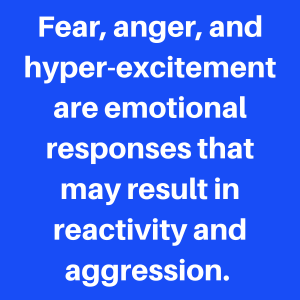 another continuum. Even positive stress, or eustress, such as happiness that leads to hyper-excitement, may cause undesirable reactivity. Fear, anger, and hyper-excitement are emotional responses that may result in reactivity and aggression. While what we call “dog training” can work well for teaching a dog to respond to a cue like sit or down, emotional responses cannot be “trained” away. When a dog or person is in an extreme emotional state, they are under stress, making learning very difficult, if not impossible. When experiencing this level of stress, the dog is under the influence of the “fight or flight response” and is solely concerned about its survival.
another continuum. Even positive stress, or eustress, such as happiness that leads to hyper-excitement, may cause undesirable reactivity. Fear, anger, and hyper-excitement are emotional responses that may result in reactivity and aggression. While what we call “dog training” can work well for teaching a dog to respond to a cue like sit or down, emotional responses cannot be “trained” away. When a dog or person is in an extreme emotional state, they are under stress, making learning very difficult, if not impossible. When experiencing this level of stress, the dog is under the influence of the “fight or flight response” and is solely concerned about its survival. is fearful can be very helpful in determining how and if we can help them. If you have not already done so, I recommend talking to the breeder or the rescue or shelter where you obtained your dog. However, understand they may not have information or may misinterpret what they do know.
is fearful can be very helpful in determining how and if we can help them. If you have not already done so, I recommend talking to the breeder or the rescue or shelter where you obtained your dog. However, understand they may not have information or may misinterpret what they do know.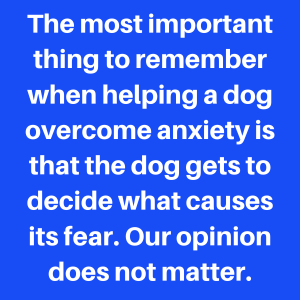

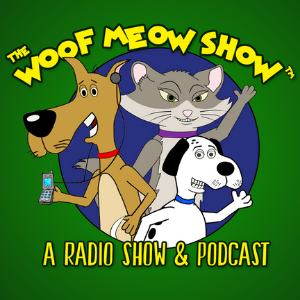 Podcasts from The Woof Meow Show
Podcasts from The Woof Meow Show  Kennel Shop ( greenacreskennel.com ) and the founder of ForceFreePets.com, an online educational resource for people with dogs and cats. He is a Professional Canine Behavior Consultant (PCBC-A) accredited by the Pet Professional Accreditation Board (PPAB) and a Bach Foundation Registered Animal Practitioner (BFRAP). Don is a member of the Pet Professional Guild (PPG), where he serves on the Board of Directors and Steering Committee and chairs the Advocacy Committee. He is also a founding director of Pet Advocacy International (PIAI). In addition, Don produces and co-hosts The Woof Meow Show podcast, available at http://bit.ly/WfMwPodcasts/, the Apple Podcast app, and Don’s blog: www.words-woofs-meows.com. The opinions in this post are those of Don Hanson.
Kennel Shop ( greenacreskennel.com ) and the founder of ForceFreePets.com, an online educational resource for people with dogs and cats. He is a Professional Canine Behavior Consultant (PCBC-A) accredited by the Pet Professional Accreditation Board (PPAB) and a Bach Foundation Registered Animal Practitioner (BFRAP). Don is a member of the Pet Professional Guild (PPG), where he serves on the Board of Directors and Steering Committee and chairs the Advocacy Committee. He is also a founding director of Pet Advocacy International (PIAI). In addition, Don produces and co-hosts The Woof Meow Show podcast, available at http://bit.ly/WfMwPodcasts/, the Apple Podcast app, and Don’s blog: www.words-woofs-meows.com. The opinions in this post are those of Don Hanson.